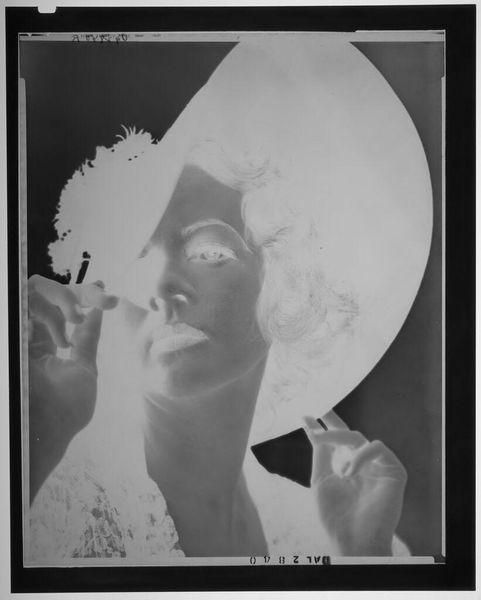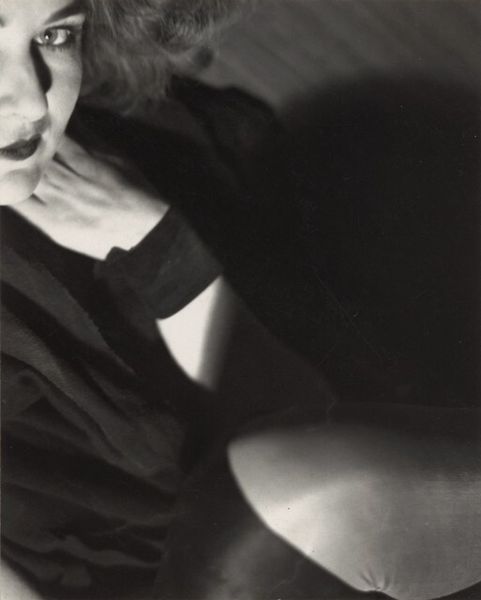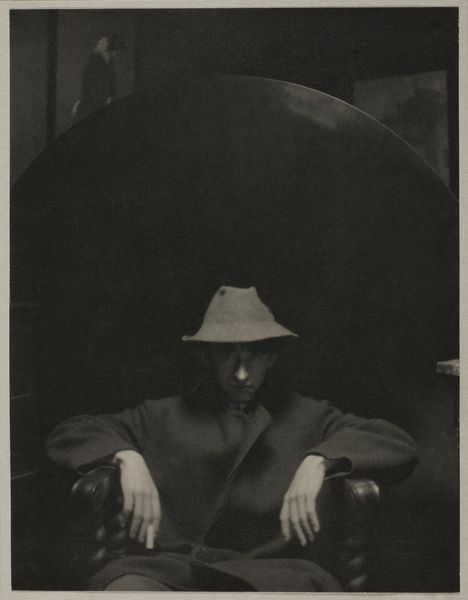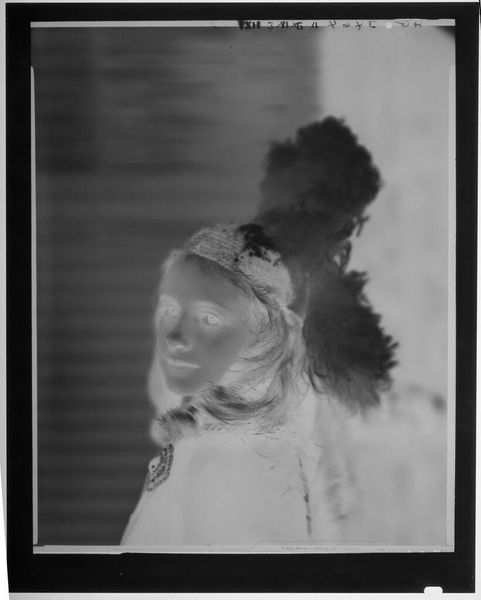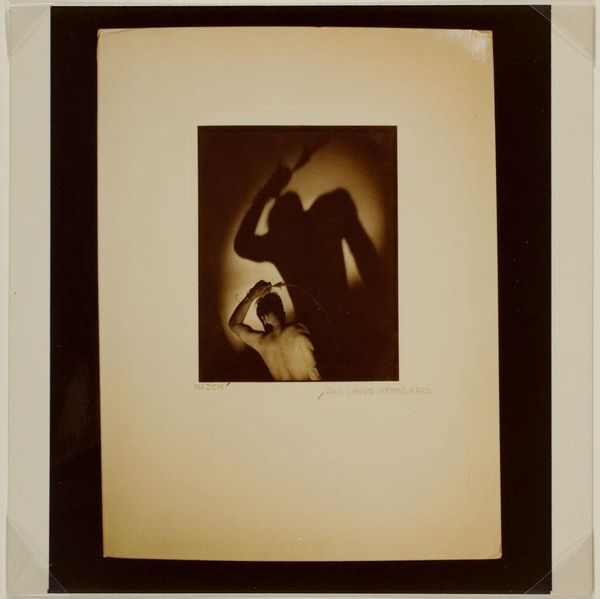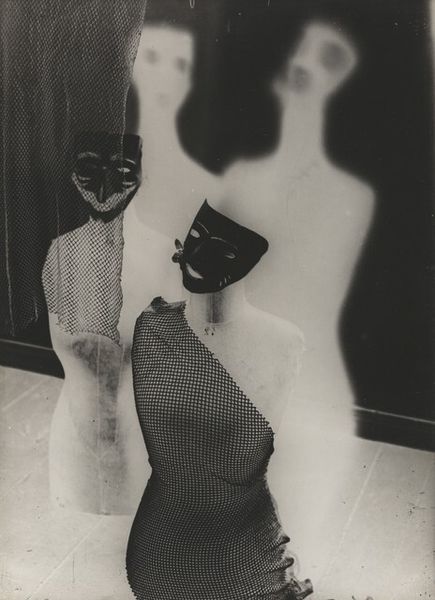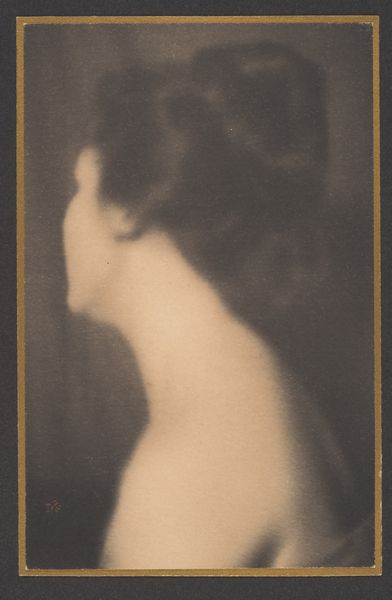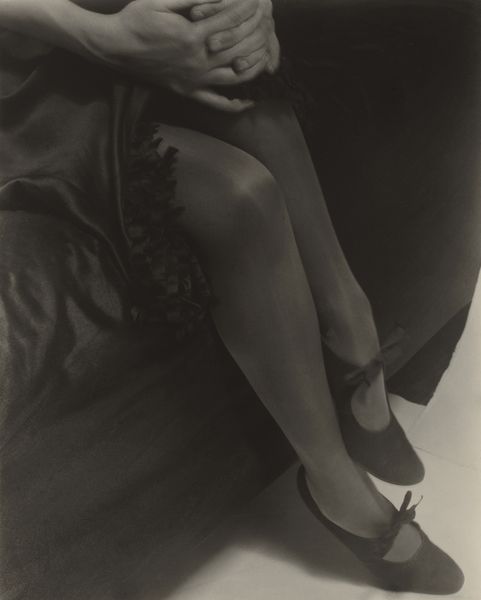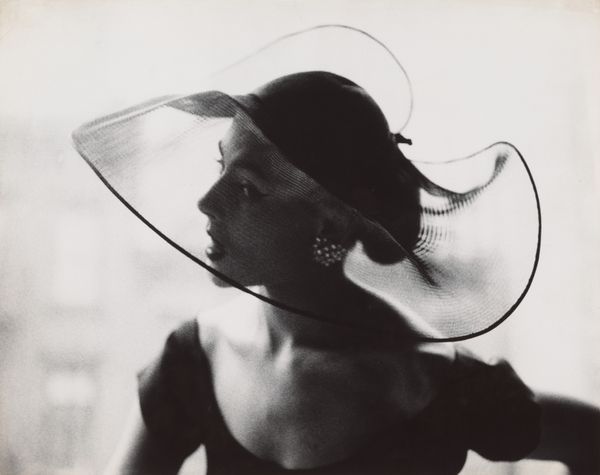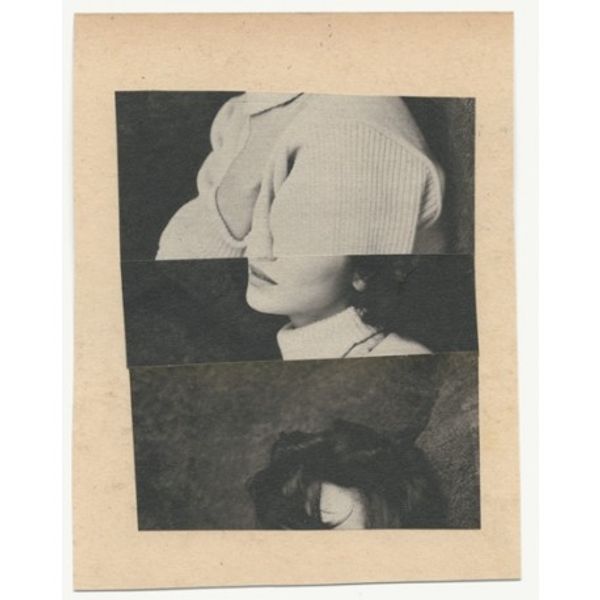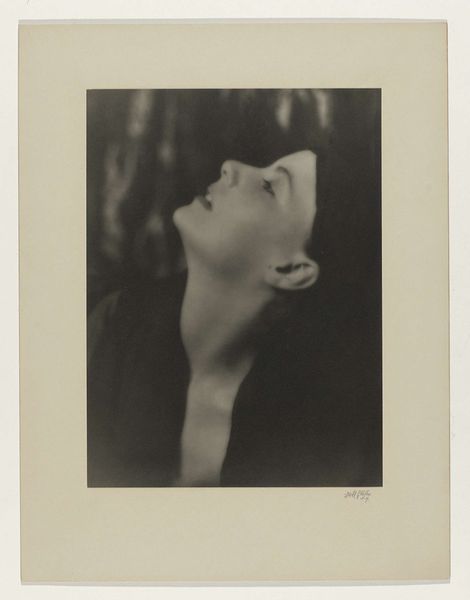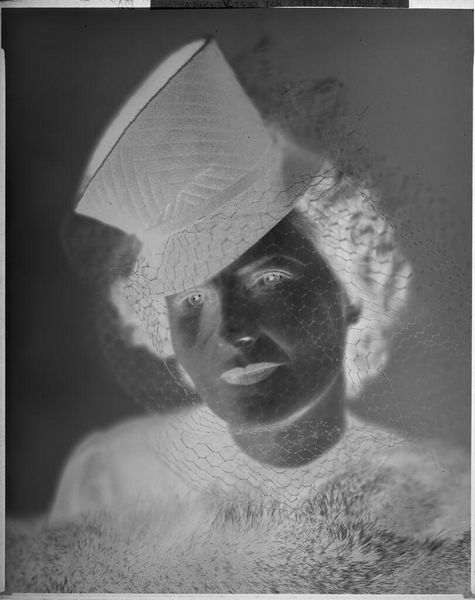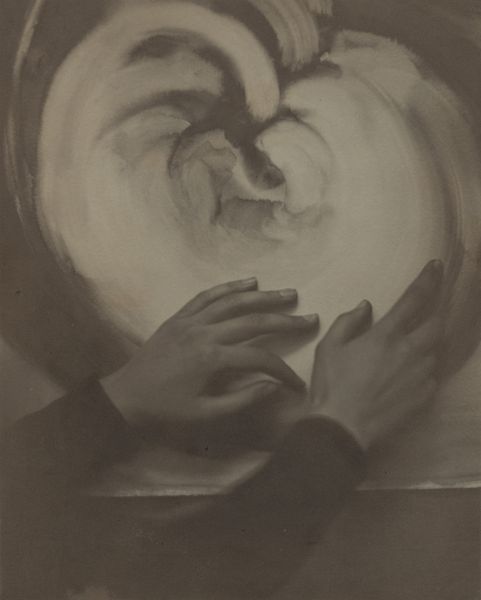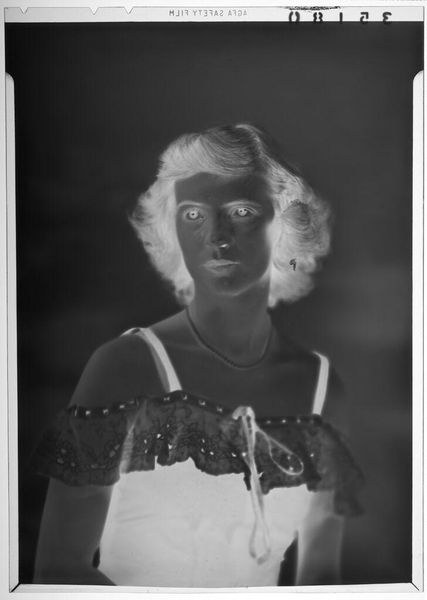
photography
#
portrait
#
photography
#
symbolism
#
portrait photography
Dimensions: Image: 39.8 x 29.8 cm (15 11/16 x 11 3/4 in.) Mat: 61 x 50.8 cm (24 x 20 in.)
Copyright: Public Domain
Curator: Looking at this photographic print titled "Scherzo di Follia," produced sometime between 1861 and 1932 by Pierre-Louis Pierson, I'm immediately struck by its uncanny, dreamlike quality. Editor: The single visible eye framed by an oval and the severe rectangular mask—it speaks to restriction and an almost theatrical surveillance. I wonder about the context of masking here, especially combined with the title's suggestion of madness. Curator: Masks were very present at court where Pierson was taking photos of the Countess. There is a strong sense of play with the materiality of photography itself; the manipulated surfaces, the props employed... it seems to undermine straightforward representation. One must keep in mind it's a photograph of Countess de Castiglione. The Countess’ obsessive involvement and control over the production of her images were legendary, she used it as a means of controlling her image as well as preserving her looks. Editor: The visible eye certainly anchors the composition. Throughout history, the eye has served as a potent symbol for insight, vigilance, even divine judgment, hasn’t it? Here, it's simultaneously exposed and concealed. Curator: I think so, especially regarding what she was wearing for the photoshoot, this play is a key element in understanding it. Her hand position, with a visible ring, plus the texture of what appears to be a necklace -these details hint at a complex social world but the fragmentation resists any unified narrative. There's a conscious construction of persona happening here. The making of identity as performance! Editor: Performance indeed. It’s almost as if Pierson and de Castiglione are crafting a symbolic language—one that hints at hidden narratives of beauty, power, and the theater of the self. I am eager to see the kind of material available regarding these pieces. Curator: Precisely. By foregrounding the performative and constructed nature of identity, Pierson gives the stage to reveal how she viewed herself. What is more, this forces us to consider her in the space in which the image was born. I believe further viewing would yield further context in which she existed. Editor: Ultimately, the photograph pushes us to look deeper, both at the subject and at the very act of looking. Fascinating piece.
Comments
No comments
Be the first to comment and join the conversation on the ultimate creative platform.
